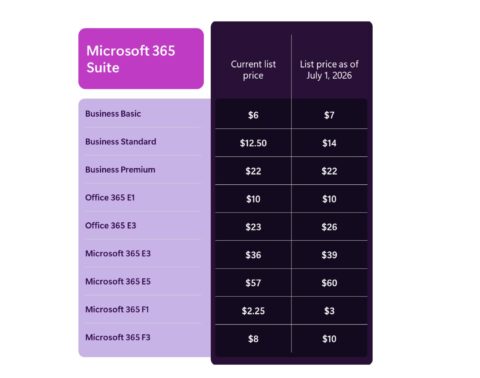Updated: July 29, 2024 (July 11, 2024)
BlogMicrosoft Teams is no longer the favorite child: Why customers should take notice

The day before the start of the July 4 holiday in the U.S., Microsoft quietly announced via a blog post that the Teams Office 365 Connectors feature will be phased out between August 15 and January 1, 2025. To say that decision has been unpopular is an understatement.
In hundreds of angry comments on the blog post outlining the coming change — which impacts the way that updates from Microsoft and third-part services are integrated into Teams channels — customers are taking Microsoft to task about everything from super short notice, to lack of migration documentation, to potentially much higher bills if they use Microsoft’s suggested replacement (Power Automate workflows).
Update (July 26): Microsoft bowed (a bit) to customer “feedback” and extended the Office 365 connector phase-out deadline to give customers more time to move to “Power Automate, an app within Microsoft Teams, or Microsoft Graph.”
Just a year or two ago, it would be next-to-impossible to imagine Microsoft allowing this kind of situation to happen, given Teams’ exalted status in the company.
But it’s a new era for Microsoft Teams; it is no longer the favorite child. Teams has been pushed aside by the almighty Copilot. And making matters worse, for both Microsoft and its customers, Teams is at the crux of a major antitrust case in Europe which is looking unlikely to go Microsoft’s way.
Teams had a heady start. In 2018, just a year after it launched Teams, Microsoft proclaimed it the fastest growing business app in Microsoft history. During the COVID-19 pandemic, Microsoft officials trumpeted how quickly Teams’ user base and adoption was growing. Every week, Microsoft announced a slew of significant new Teams features, most of which were added to the product for no additional cost.
But Teams’ growth started to slow. In 2021, Microsoft shifted its publicly reported Teams metric from daily active users to monthly active users, seemingly to try to hide the fact Teams adoption was starting to plateau. Around the same time, an antitrust suit launched by Slack against Microsoft over Teams bundling practices started to gain momentum.
Reading the lifecycle tea leaves
When a Microsoft product hits the point in its lifecycle where it’s no longer the newest, shiniest jewel, Microsoft typically shifts its strategy around it. Execs become tasked with finding ways to ensure that product keeps generating more average revenue per user (ARPU), which almost always spells price increases, new monetization methods (such as turning features that would have been added for no additional cost into paid add-ons), or both.
“Teams has very much left the high-growth strategic-market ‘golden child’ category within Microsoft. And, as such, it’s been sent off to the ‘cash cow’ mines of widely-adopted products and services (joining Office, Windows, and others) to use its market position to generate more revenue and to help boost the profile of the newest cadre of golden children,” explained Directions on Microsoft analyst Jim Gaynor.
Teams also faces regulatory complications, which impact not just public perception, but also portends potential (and costly) licensing changes.
In late June, the European Commission issued its initial findings that Microsoft illegally bundled Teams with Microsoft 365 and Office 365 subscriptions. Microsoft had attempted to head off the EC’s case by making Teams available as a separately priced, unbundled product for “net new” customers worldwide earlier this year, but antitrust regulators seem to have found that move insufficient. If Microsoft and the EC can’t come to terms, Microsoft could face a fine of up to 10 percent of the company’s annual worldwide revenues plus possible additional remedies crafted by the EC.
Looking back to predict ahead
Independent of what Microsoft is required to do by European regulators in the Teams case, there are still some likely pricing and licensing patterns customers should expect based on history.
Microsoft’s push to continue to wring profits out of products, regardless of how far along they are on the adoption curve results in more and more features being released as separately priced add-ons. We’ve already seen the start of this with Teams Premium, a collection of AI, security and advanced meeting features, which costs $10 per user per month. And customers who want to take advantage of Copilot in Teams must pony up an additional $30 per user per month for the privilege.
“The message for customers is that these new products that Microsoft was heavily promoting a handful of years ago, that you wove into your business, are now entering the ARPU-focused phase,” said Directions’ Gaynor. “So, you’re going to see prices increase, the pace of new features not tied to add-ons drop off precipitously, interoperation with things outside the Microsoft ecosystem dry up, and previously included capabilities cut in favor of similar-but-different things that boost other initiatives.”
Teams is likely still a way away from joining the club shared by the on-premises versions of SharePoint, Project, Exchange, Skype for Business servers — products much further along in their lifecycles. (But all of which still have enough customers willing to pay to justify the Subscription Edition, or SE, variants.) But before Teams gets to that point, customers should be looking for ways to reduce investing in it — or any other products in which Microsoft is no longer investing, for that matter.
Related Resources
July 3: Get ready for the retirement of Office 365 Connectors in Teams
What to know before you go Teams-less
Paid add-ons to Microsoft 365 are rapidly multiplying: What’s a customer to do?
Podcast: When should you walk away from a Microsoft product?















